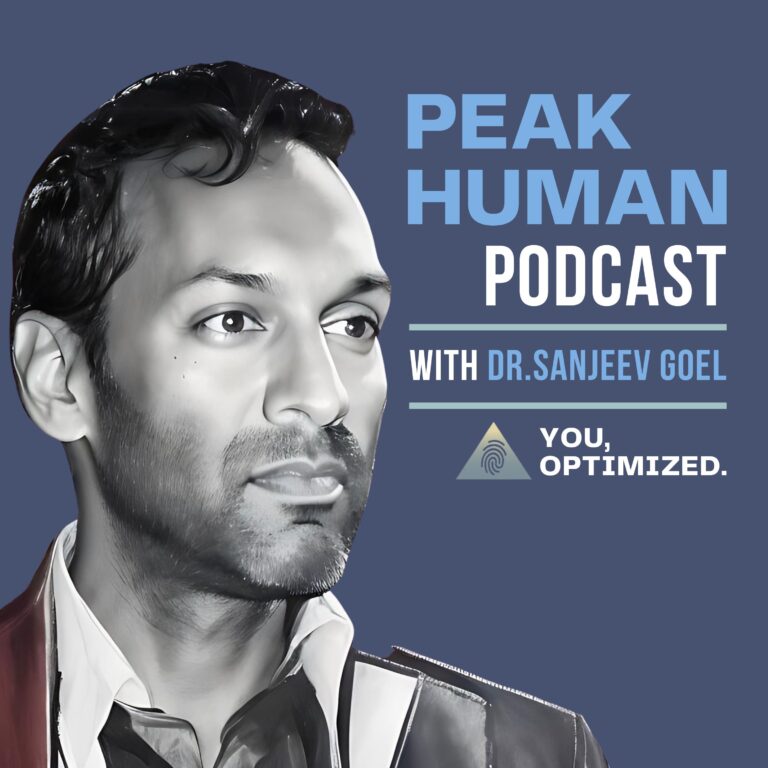Struggling with the silent menace of fatty liver disease is an ordeal many individuals face, with concerns about its impact on their overall health and life expectancy.
In this article, we delve into the relationship between fatty liver disease and life expectancy, exploring the stages of the condition, the critical role of lifestyle changes, and the factors that can influence how this disease affects the length and quality of one’s life.
Discover the insights you and your loved ones need to navigate the challenges of fatty liver disease and safeguard your well-being.
Fatty Liver Disease Can Take Years Away From Your Life | What to Do When It’s Time to Act
What is Fatty Liver Disease?
Fatty liver disease, also known as hepatic steatosis, is a medical condition characterized by the accumulation of excess fat within the liver (more than 5-10% of liver weight). This fat buildup can interfere with normal liver function and lead to various health problems.
Fatty liver disease is classified into 2 main types, which are defined by their root causes:
Alcoholic Fatty Liver Disease (AFLD)
![]()
AFLD primarily results from excessive alcohol consumption. When alcohol is consumed, the liver works to break it down, but excessive intake can overwhelm its capacity. As a result, the liver accumulates fat due to the inefficient processing of alcohol.
This condition can range from mild steatosis to more severe forms, such as alcoholic hepatitis or alcoholic cirrhosis, which can be life-threatening.
Metabolic-associated Fatty Liver Disease
Metabolic-associated fatty liver disease is more commonly known as Non-alcoholic Fatty Liver Disease (NAFLD). Still, it has been recently renamed to reflect the broader range of factors contributing to its development.
NAFLD is linked to metabolic factors such as:
- Obesity
- Diabetes
- High blood pressure
- High cholesterol
The excess fat in the liver in NAFLD is not directly related to alcohol consumption.
NAFLD is divided into various stages, with non-alcoholic fatty liver (NAFL) being the earliest and non-alcoholic steatohepatitis (NASH) being a more advanced, inflammatory stage.
How Common is Fatty Liver Disease?
Fatty liver disease, particularly NAFLD, is alarmingly prevalent:
- In the United States, NAFLD is one of the most common liver diseases, impacting 24% of adults.
- Globally, a 2023 research overview suggests that NAFLD’s prevalence ranges from 11.5% to 46% across the general population.
- NAFLD is closely linked to metabolic syndrome. NAFLD is present in around 80% of people with metabolic syndrome.
- One well-known risk factor for NAFLD is obesity. Up to 90% of people with severe obesity have NAFLD, and some even have cirrhosis.
- A subset of individuals with NAFLD develop into NASH. In the United States, it is estimated that NASH affects about 1.5% to 6.5% of adults.
These statistics underscore the urgent need for awareness and proactive measures to address this widespread health concern.
What Causes Fatty Liver Disease?
Fatty liver disease arises from imbalances in the liver’s metabolic processes. The liver can accumulate fat under certain circumstances when it processes fat and glucose.
In NAFLD, the exact cause is often a combination of factors:
- Insulin Resistance: One of the critical drivers of NAFLD is insulin resistance. When the body becomes resistant to insulin, it struggles to regulate glucose effectively, leading to fat storage in the liver.
- Obesity: Excess adipose tissue, especially around the abdomen, is linked to the development of fatty liver disease.
- Dietary Factors: A diet high in sugars, unhealthy fats, and processed foods can overload the liver with excess fat, contributing to NAFLD.
- Physical Inactivity: A sedentary lifestyle can exacerbate obesity and insulin resistance, increasing the risk of fatty liver disease.
- Genetics: Some individuals may be genetically predisposed to NAFLD, making them more vulnerable even with lifestyle modifications.
In the case of AFLD, the cause is more straightforward – excessive alcohol consumption. Alcohol is metabolized in the liver, and heavy drinking can overwhelm the liver’s ability to process it, leading to the accumulation of fat.
Fatty Liver Disease Symptoms
In its early stages, fatty liver disease is often asymptomatic, meaning that individuals may not even be aware that they have the condition. This can make it a “silent” disease, as many people do not seek medical attention until it has progressed to a more severe stage.
However, as the condition advances, it can lead to various symptoms, which may include:
- Fatigue: Many individuals with fatty liver disease report persistent fatigue and a feeling of overall weakness.
- Abdominal Discomfort: Some people experience discomfort or pain in the upper-right abdomen.
- Unexplained Weight Loss: In advanced cases, unexplained weight loss can occur.
- Jaundice: In severe cases, yellowing of the skin and eyes can develop.
- Swelling of the Abdomen and Legs: Accumulation of fluid in the abdominal cavity (ascites) or the legs (edema) can occur with advanced liver disease.
- Enlarged Liver: The liver may become enlarged and tender to the touch.
- Mental Confusion: Cognitive difficulties may arise due to the liver’s inability to effectively filter toxins from the bloodstream.
How Serious is Fatty Liver Disease?
In the case of NAFLD, advanced stages can result in non-alcoholic steatohepatitis (NASH), characterized by liver inflammation.
NASH can lead to severe liver damage and fibrosis, eventually progressing to cirrhosis, a condition where scar tissue replaces healthy liver tissue. Cirrhosis severely impairs liver function and can lead to life-threatening complications, including liver failure.
In AFLD, excessive alcohol consumption can lead to alcoholic hepatitis, a condition marked by liver inflammation. If alcohol abuse continues, it can result in alcoholic cirrhosis, which has similar consequences to NASH-related cirrhosis.
Fatty liver disease is also associated with an increased risk of other health problems. Excess fat in the liver is closely linked to:
- Insulin resistance, which can lead to type 2 diabetes
- Cardiovascular issues, such as heart attacks and strokes
Stages of Fatty Liver Disease
Fatty liver disease progresses through 4 stages, each with varying degrees of liver damage and life expectancy implications:
Stage 1: Simple Fatty Liver (Steatosis)
This initial stage is often asymptomatic, and most people may not even know their condition. Simple fatty liver does not cause significant liver damage, and life expectancy with fatty liver disease remains unaffected at this stage.
Stage 2: Non-alcoholic Steatohepatitis (NASH)
NASH causes liver inflammation and cell damage. This stage can lead to more severe liver problems and may reduce life expectancy slightly. Progression to NASH can take years, and the risk of developing NASH varies from person to person.
Stage 3: Fibrosis
Scar tissue builds up in the liver, obstructing blood flow and liver function. The fibrosis can range from mild to severe, with more significant scarring leading to a more noticeable reduction in life expectancy with fatty liver disease.
Stage 4: Cirrhosis
Cirrhosis is the most advanced stage of fatty liver disease, characterized by extensive scarring, liver malfunction, and an increased risk of liver cancer. Life expectancy with fatty liver disease is significantly reduced at this stage.
It may take several decades, around 30 years, for fatty liver to progress to cirrhosis unless there is a genetic predisposition or other complicating factors.
Is Fatty Liver Disease Fatal?
Fatty liver disease itself does not typically result in fatality for most people. However, the risk of severe complications increases when left untreated and progresses to cirrhosis.
Untreated cirrhosis can lead to liver failure or cancer, both of which can be life-threatening. The severity and outcome largely depend on the stage of fatty liver disease and the individual’s response to treatment.
How Long Can You Live With a Fatty Liver?
Many individuals with fatty liver disease may live their natural lifespan without experiencing complications. However, the situation becomes more complicated for a small percentage of people, particularly those who progress to NASH, especially cirrhosis.
Research suggests that NAFLD can reduce life expectancy by approximately 4 years. Nevertheless, it may take around 30 years for fatty liver to develop into cirrhosis unless genetic predisposition or other risk factors are involved.
Typically, people are diagnosed with cirrhosis around the age of 60, but the rising rates of obesity at a younger age might affect life expectancy with fatty liver disease in individuals.
Does Fatty Liver Always Lead to Cirrhosis?
There is limited recent scientific research on how often fatty liver disease progresses to cirrhosis. However, older studies suggest that people with AFLD have an 8-30% risk of developing fibrosis or cirrhosis after 10 years of excessive alcohol consumption.
However, the progression of fatty liver to cirrhosis is typically slow, taking several decades, and may depend on various factors such as genetics, lifestyle, and overall health.
How to Reverse Fatty Liver Disease
According to research, treating and managing fatty liver disease involves a multifaceted approach to improving liver health and overall well-being. Lifestyle modifications and weight loss are the foundation of fatty liver disease treatment.
Diet and Lifestyle
Adopting a balanced diet that includes whole foods, engaging in regular physical activity, and maintaining a healthy weight are essential. Weight loss has been proven to reduce fat accumulation in the liver effectively.
Weight Loss
For those with significant obesity, weight loss surgical procedures like gastric bypass (a surgery that decreases stomach size and changes how the stomach and small intestine absorb food) may be considered.
Evidence suggests that losing 3-5% of body weight is necessary to notice an improvement in fat accumulation in the liver. A more substantial loss (up to 10%) may even address necroinflammation (the inflammatory response to necrotic cell death).
Pharmacological Approach
Abstinence from alcohol and drugs that can damage the liver is crucial for fatty liver disease treatment. In some cases, pharmacological options may be used, though their effectiveness can vary. Some medications for fatty liver disease include:
- Metformin
- Vitamin E
- Fish oil
- Orlistat (an inhibitor of gastric and pancreatic lipase)
- Sibutramine
However, it’s important to note that the scientific evidence supporting certain medications for non-alcoholic fatty liver disease is limited.
Bottom Line
Fatty liver disease can progress through various stages, significantly impacting life expectancy in advanced stages. However, with early detection and proactive lifestyle changes, including weight loss and dietary improvements, the progression can be delayed and, in some cases, even reversed.
Regular medical follow-ups and adherence to treatment recommendations are vital in managing this condition. Liver transplantation may be the last solution for individuals with advanced disease and cirrhosis.
References
Dam-Larsen S. et al. (2004). Long-term Prognosis of Fatty Liver: Risk of Chronic Liver Disease and Death. BMJ Journals.
Sookoian S. et al. (2017). Genetic Predisposition in Non-alcoholic Fatty Liver Disease. Clinical and Molecular Hepatology.
If you have questions about life expectancy with fatty liver disease or any health problems discussed here, contact us and learn more.
At Peak Human, our team of healthcare professionals helps you reach your ’peak’ health with a custom whole-person approach. Using the most cutting-edge, science-backed biohacking and aesthetic tools available today, we help you achieve the highest physical/cognitive performance state, improving your overall quality of life.
Don’t hesitate to contact us for questions or to book an appointment. Get personalized support and insight from expert physicians.
UP NEXT:
- 10 Warning Signs Your Liver is Struggling & What You Can Do About It
- Jumpstart Weight Loss With Biohacking, Nutraceuticals, and Plant-based Supplements
- A Ketogenic Diet, Alternated Weekly With a Normal Diet, Can Increase Healthspan and Memory






